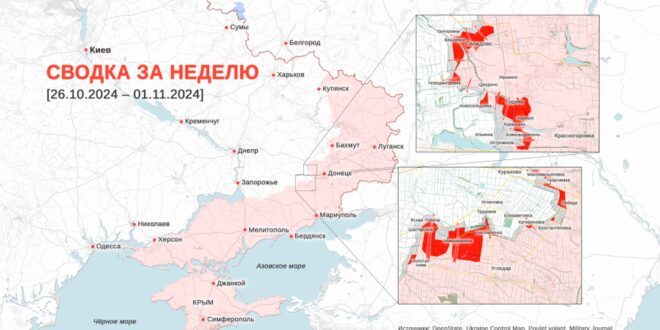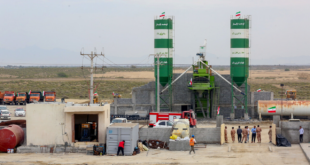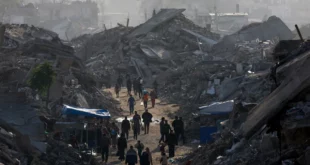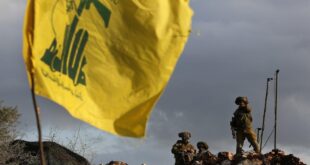- In today’s summary:
- Russian troops have made significant advances on the southern flank of the Pokrovsk direction and on the Ugledar salient
- Ukrainian Armed Forces units defend on the left bank of the Oskol River and counterattack in Volchansk in the north of the Kharkiv region
- In the Kursk region, the Russian Armed Forces’ offensive has stalled again, having run into previously abandoned Russian fortifications
- The interception rate of air targets by Ukrainian air defense forces in October 2024 was 90%
- Ukrainian drones hit more distilleries and reached Chechnya for the first time during the war
- Z-channels close to aviation report the loss of a Mi-28 helicopter and a Su-34 fighter-bomber in a week
- “Spy Dossier” – Russian military personnel in Kursk and Zaporozhye regions have marked themselves with murders of their fellow servicemen
- Ukraine to ask Republic of Korea for military assistance in connection with involvement of DPRK troops in combat operations
- The situation at the front
- This week, the Russian Armed Forces made significant progress in the area from the southern flank of the Pokrovsk direction to the southern face of the Ugledar salient . They managed to take the city of Selidovo (as confirmed by DeepState ), and did so relatively quickly, which allowed them to avoid significant destruction. Russian troops broke through to Vishnevoe to the east of the city and tried to advance to Grigorovka and Petrovka. To the south, Russian forces captured the city of Gornyak and neighboring Izmailovka , as well as the village of Kurakhovka . A number of settlements (in particular, Shakhtyorske , Novoukrainka, Bogoyavlenka and Katerinovka ) were captured on the southern face of the Ugledar salient. Apparently, the next goals will be the city of Kurakhovo and the cutting off of the Ugledar salient in general.
In addition, the Russian Armed Forces are trying to expand the control zone on the left bank of the Oskol River, marking themselves with a “flag-raid” in Kruglyakovka. Ukrainian troops are trying to stop them, holding back attacks in the area of neighboring Kolesnikovka. The Ukrainian Armed Forces also continue to counterattack in the destroyed Volchansk and even take Russian troops prisoner.
In Kursk Oblast, against the backdrop of Ukrainian counterattacks, the advance of the Russian Armed Forces has once again stalled, having “run into” Russian fortifications occupied by Ukrainian troops (this time in Darino ). Ukrainian paratroopers demonstrate a “road of death” from Korenev to Lyubimovka, strewn with destroyed Russian tanks and armored vehicles , while the marines of the 810th Brigade, to whom the pro-Kremlin media attribute imaginary successes, refuse to go into “meat assaults .” At the same time, it is reported that North Korean troops have arrived in Kursk Oblast, although they have not yet entered the battle . Meanwhile, new video evidence ( 1 , 2 ) of Russian troops looting is appearing, while Z-sources accuse the Ukrainians of the same.
In the neighboring Bryansk region, a Ukrainian sabotage and reconnaissance group made an unsuccessful attempt to break through the border. The FSB reported the deaths of foreign citizens from the group and showed their bodies and personal belongings. Among the dead was retired American Marine Corey John Nawrocki, who had received military awards.
The Z-community continues to complain about the transfer of valuable specialists to the assault infantry, including drone operators, and also complains about the quality of reinforcements and insufficient training time for privates and command personnel ( 1 , 2 ). However, the Russian side has had some successes on the drone war fronts – it can now launch Zala reconnaissance UAVs and Lancet loitering munitions from boats in the Black Sea, and aircraft-type reconnaissance drones have learned to perform automatic evasive maneuvers from Ukrainian FPV interceptors (which, however, did not save one of them from being hit in the lower hemisphere, where there was no camera to track enemy drones).
Mutual shelling and sabotage
The Ukrainian Air Force Command reported ( 1 , 2 , 3 , 4 , 5 , 6 , 7 ) the launch of 472 Russian UAVs of the Shahed type and other unidentified types over the past week. Of these, 258 were shot down, and another 182 were “lost in location” without detonation (i.e., either fell under the influence of electronic warfare , or turned out to be false targets without a warhead). In addition, 21 missiles of various types were launched, three of which were shot down. The largest missile strike was carried out on the bridge across the Dniester Estuary near Zatoka in the Odessa region , but it was not possible to disable it .
In Kiev this week, drones have repeatedly hit residential buildings and other civilian infrastructure ( 1 , 2 , 3 ). As a result of the attacks in the Ukrainian capital, one person was killed and 21 others were injured. During the missile strike on the Dnieper, three people were killed and 18 were injured, and the Mechnikov Hospital was damaged . In Kryvyi Rih, one person was killed and at least 14 were injured when an Iskander-M ballistic missile hit. In Kharkov, three people were killed and 36 were injured when a KAB hit a high-rise building . Also in Kharkov , the Derzhprom (Gosprom – House of State Industry) – an architectural monument of the constructivist era, which is called one of the first Soviet skyscrapers, was seriously damaged .
The Ukrainian Telegram channel Military Journal publishes statistics on air targets neutralized by Ukrainian air defense in October. According to these calculations, the interception rate was 90% (1,795 air targets out of 1,992 were shot down) . Including:
“Shaheds” and drones – false targets – 1785 out of 1914 (93%);
Kh-59 air-launched guided missiles – 0 out of 13 (0%);
air-launched guided missiles Kh-59/Kh-69 – 7 out of 20 (35%);
Iskander-K cruise missiles – 1 of 1 (100%);
Iskander-M/KN-23 ballistic missiles – 0 out of 23 (0%);
Kinzhal missiles – 2 out of 3 (67%);
anti-ship missiles Kh-22 – 0 out of 2 (0%);
Kh-31P air-to-air guided missiles – 0 out of 4 (0%);
anti-ship missiles Kh-35 – 0 out of 1 (0%);
SAM from the S-300/S-400 air defense system – 0 out of 11 (0%).
“Belaruski Gayun” counted more than 100 “Shaheds” that flew from Ukrainian airspace to Belarus, and the number of such incidents is constantly growing. If in July this happened nine times, and in August – 12, then in September – already 27, and in October – 49.
In addition, this week, an “abnormal descent” of four Russian FABs with a UMPK module was recorded ( 1 , 2 ). According to Astra’s calculations, since the beginning of the year, the Russian Aerospace Forces have “dropped” at least 138 aerial bombs on Russian territory and the occupied territories of Ukraine, the vast majority of which did not explode.
The Russian Defense Ministry, in turn, reported ( 1 , 2 , 3 , 4 , 5 , 6 ) on the interception of 223 Ukrainian aircraft-type UAVs over Russia, occupied Crimea and the Black Sea. Over the course of the week, Ukrainian forces hit the following targets:
Transneft-Druzhba control station in the Tambov region,
two distilleries in the Voronezh region,
ammunition depot in occupied Lugansk,
Russian Special Forces University in Chechnya (drones reached this region for the first time during the war),
the port of occupied Berdyansk in the Zaporizhia region,
S-300/400 air defense missile system and Podlet radar (October 23) in occupied Crimea,
fuel and energy complex enterprises in Bashkortostan,
oil depot in Stavropol Krai.
In most cases, local authorities and occupation administrations reported repelling attacks or minor damage, although at least the Luhansk ammunition depot suffered quite serious damage. At the same time, an oil depot in the Stavropol region was protected by a “barbecue” around the tank. Anti-drone structures also appeared over the oil refinery in Moscow, which was damaged during the attack on September 1.
According to data collected by CIT volunteers in October, at least 219 civilians were killed and another 1,255 were injured as a result of shelling of civilian infrastructure in Russia and Ukraine (including in the occupied territories) .
Losses
Z-channels close to the Russian Aerospace Forces reported ( 1 , 2 ) about the crash of a Mi-28 helicopter in the Kerch Strait and the death of the crew . In addition, several messages were published there, presumably about the loss of a Su-34 fighter-bomber and the death of its crew ( 1 , 2 , 3 ). Other sources also mentioned the crash of a Su-25 attack aircraft near the airfield. Judging by individual hints, the pilot of the plane escaped with injuries.
Analyst Naalsio updated the calculations of visually confirmed losses of military equipment in the Kursk direction. During the period from October 15 to 28, 36 units of Ukrainian equipment and 68 Russian were added. Against the backdrop of the Russian counteroffensive in the region, Russian equipment losses exceed Ukrainian ones. In total, the Ukrainian Armed Forces lost at least 287 units of equipment in this direction, while the Russian Armed Forces lost at least 249 units .
The author of the Telegram channel “Officer ✙” spoke about the alleged cases of shooting of residents of Selidovo by Russians. According to him, reconnaissance from drones revealed the corpses of civilians in places where there was no fierce fighting, which, in his opinion, indicates that the killings took place after the capture of the city by the Russian Armed Forces. In addition, according to preliminary data from the Office of the Prosecutor General of Ukraine, on October 24, Russian soldiers shot at a civilian car in the city in which there were two civilians (one of them was wounded), and also killed two women.
The Telegram channel “Dossier Shpiona” reported two cases of “friendly fire” in the Russian army . According to the channel, on October 25, in the area of the village of Kremyanoye in the Kursk region, Private Alexander Ryabov shot and killed the deputy commander of the 2nd motorized rifle battalion of the 810th separate marine brigade, Captain Dmitry Slepnev, with an AK-74, after he entered into a verbal conflict with him. On October 26, in the area of Novopokrovka in the Zaporizhia region, a serviceman of the 2nd assault company “V” of the 38th separate motorized rifle brigade, Maksim Fedorchenko, shot ten sleeping fellow soldiers and fled; his search continues.
The Insider published an article about the “murder epidemic” that has spread among the Russian military at an unprecedented level in 2024. The Russian Armed Forces do not spare Ukrainian prisoners of war, nor Ukrainian and Russian civilians, nor each other, and there appears to be no effective system for preventing such crimes in the Russian Armed Forces and combating PTSD “in civilian life.”
Weapons and military equipment
During the week, the following military aid packages from Ukraine’s Western partners became known:
Croatia will supply Ukraine via Germany with 30 M-84 tanks and 30 M-80 infantry fighting vehicles of Yugoslav production as payment for an order from Germany for 50 Leopard 2A8 tanks;
France will equip and train another brigade of the Ukrainian Armed Forces in addition to the Anna Kievskaya Brigade, whose servicemen are currently undergoing training in the country;
Canadian ACSV armored personnel carriers in a medical version were sent to Ukraine ;
Northern European countries will make purchases for the Ukrainian Armed Forces from the Ukrainian military-industrial complex according to the “Danish model”; Sweden and Norway have already announced investments ;
Norway will also partially finance the transfer of Patriot air defense systems from Romania, as well as the purchase of weapons and spare parts for F-16 fighters, and will transfer 130 inflatable boats to Ukraine;
Lithuania supplied Ukraine with electric generators, artillery ammunition, mortar shells and winterization equipment;
The Sea King helicopters previously transferred to Ukraine will be equipped with modern missiles, which may include Brimstone and Marte ER anti-ship missiles.
At the same time, it became known that Poland refused to transfer MiG-29 fighters to Ukraine, despite a previously reached agreement, and the American company Skydio, which produces drones for the Ukrainian Armed Forces, lost its only supplier of batteries due to sanctions imposed by China for supplying American drones to Taiwan.
Ukraine will soon make a large-scale request to the Republic of Korea for arms supplies in connection with the dispatch of North Korean soldiers to the front . According to South Korean intelligence, the DPRK has already supplied Russia with 8 million 152-mm and 122-mm artillery rounds. According to Ukrainian intelligence, North Korean-made artillery ammunition accounts for 60% of all the ammunition used by the Russian Armed Forces at the front, another 10% comes from Iran, and only 30% is of Russian production.
Meanwhile, the Russian military-industrial complex reports on the delivery of BMD -4M airborne combat vehicles (the combat value of which is highly questionable due to weak armor and the inconvenience of dismounting) and the development of production of “barbecues” for armored vehicles (which are dismantled in frontline repair shops due to their unsuitability for combat conditions). Also, in an unknown way, armored Ford and Toyota vehicles manufactured by the UAE Streit Group, which previously collaborated with the Wagner PMC, ended up in service with the Russian Armed Forces, and Bloomberg reported on the import of NVIDIA AI chips to Russia with the help of an Indian pharmaceutical company.
The Ukrainian Armed Forces are installing folding anti-drone “hoods” on their equipment – this time the upgrade was spotted on the American M2 ODS Bradley IFV. The Russian front-line military-industrial complex, in turn, was noted for its Mavic 3 quadcopter with a “grill”, a T-72B3 tank with “dreadlocks” made of reinforcement on the turret, a completely apocalyptic engineering design based on the T-62M tank, and a modified “humpbacked” Zaporozhets with its own name “Zhorik” .
 Eurasia Press & News
Eurasia Press & News




